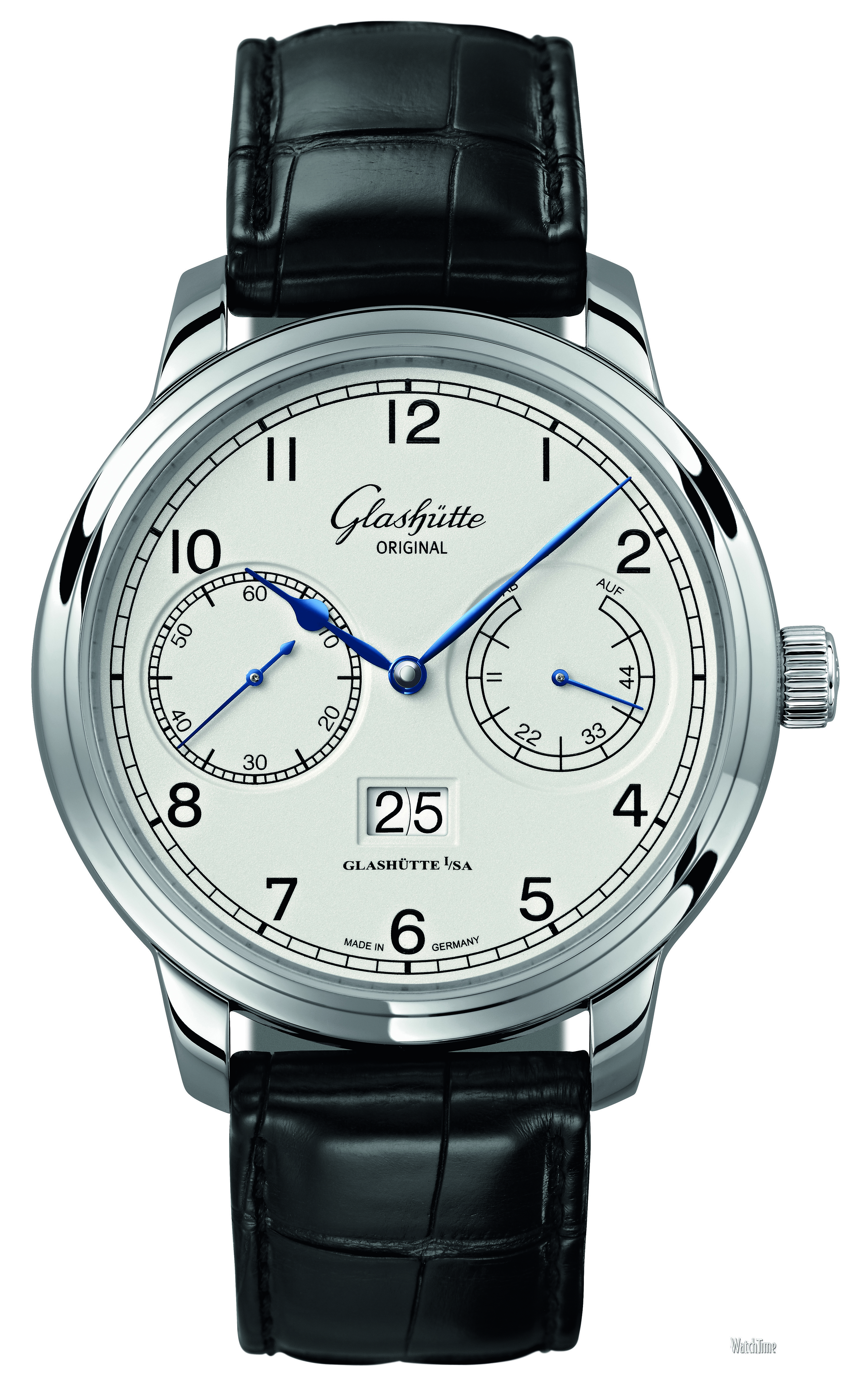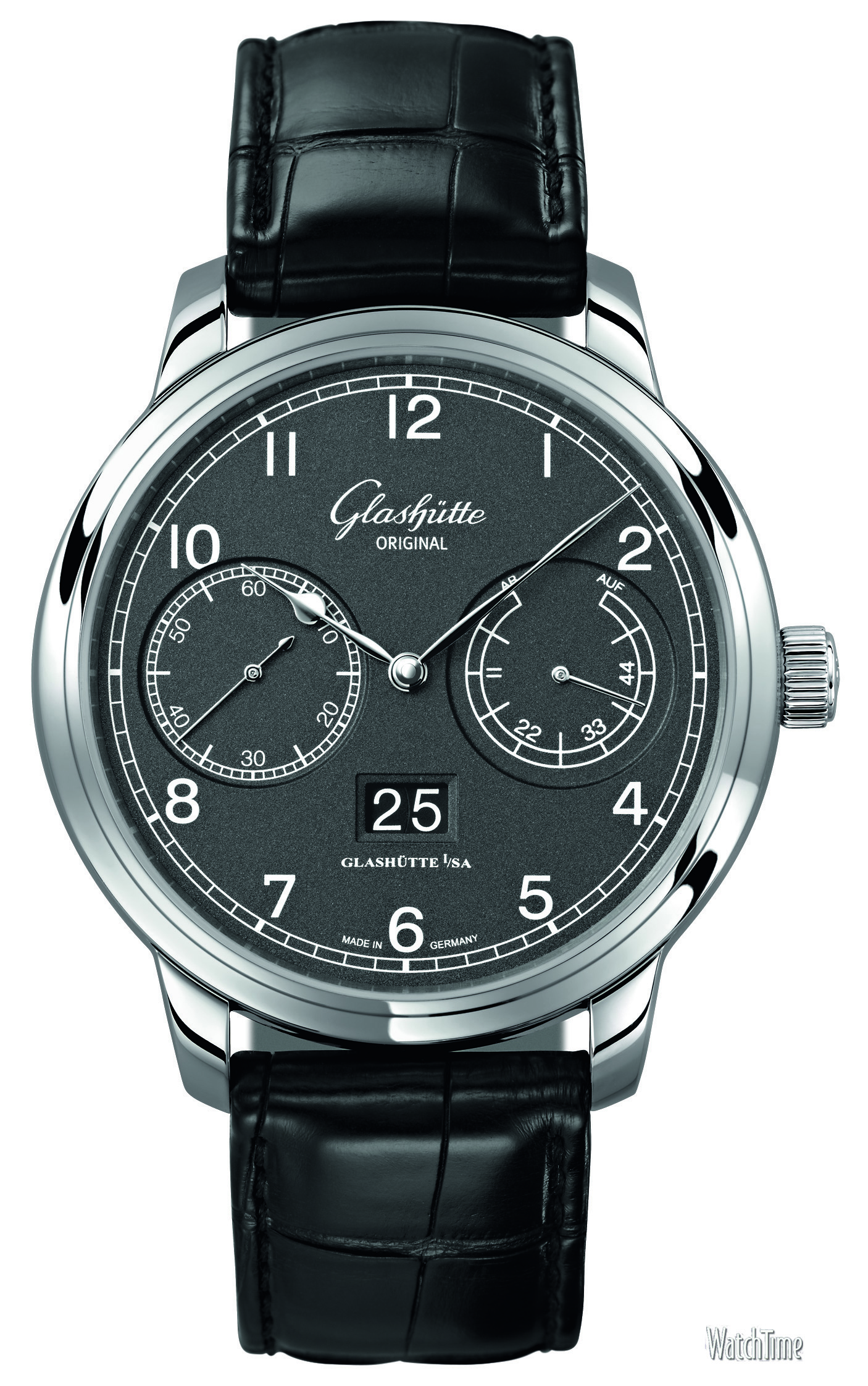Glashütte Original - Senator Observer 1911 Limited Edition – Julius Assmann
Ahead of Baselworld 2012, Glashütte Original presents the Limited Edition Senator Observer 1911 – Julius Assmann. This timepiece, handmade in the firm’s manufactory, is limited to 25 pieces and pays homage to the pioneering spirit of Julius Assmann and Roald Amundsen. Find wallpaper images inside.
Julius Assmann started his company at the age of 25 and is revered today as one of the founding fathers of watchmaking in Glashütte. Pocket watches, chronometers and observation watches crafted by Assmann and his employees were to play a significant role in establishing the company’s far-reaching reputation: the observation watches in particular were known for their remarkable precision and superior craftsmanship. In 1907/08, the young Glashütte watchmaker Paul Löwe crafted a watch that proved to be exceptionally precise, and he was urged to send it for testing to the German Naval Observatory in Hamburg, the institute officially responsible for testing and certifying the accuracy of navigational timekeepers made in Germany. It was there that Roald Amundsen saw the watch in 1910 and purchased it for his historic voyage.
Click on the mouse wheel to see the large size .... BIG FOTO
On December 14th, 1911, the Norwegian polar explorer and his team became the first persons ever to reach the geographic South Pole. Observation watches, also known as “deck watches” were used by navigation officers in conjunction with marine chronometers and other instruments to determine as precisely as possible a ship’s position at sea, and Amundsen made good use of his observation watches during his voyage to Antarctica on the polar ship, Fram. Once he and his team set out from their base camp, the time kept by his observation watches became the only standard: one watch was set to a home time and assumed the function of the marine chronometer on a ship; a second watch was set to local time; measurement of the difference between the two was used to calculate, using spherical trigonometry, the team’s position during the trek to the South Pole; a compass and sextant were also used. Thus, Amundsen’s observation watches were critical to his mission. Without them, he could not have reached his destination and claimed victory for Norway. In Oslo today, the Fram Museum displays, along with many other artifacts documenting the historic trek, one of Amundsen’s Glashütte observation watches, complete with the inscription “J. Assmann – Glashütte” on the dial.
Click on the mouse wheel to see the large size .... BIG FOTO
Observation watches continued to be manufactured in Glashütte until 1971, a testament to the ongoing production of high quality timepieces even during challenging times. In homage to those historic timekeepers, Glashütte Original has created the Senator Observer 1911 – Julius Assmann in a limited edition of 25 pieces.
Click on the mouse wheel to see the large size .... BIG FOTO
The name honors Julius Assmann’s observation watches and Amundsen’s achievement in reaching the South Pole. The Senator Observer 1911’s lacquered silvergrain dial is built up slowly from three separate layers of white lacquer, the third of which features a finely textured, silver-grain surface. The dial presents subsidiary seconds and power reserve displays at 9 and 3 o’clock, respectively; Glashütte Original’s characteristic panorama date display at 6 o’clock; and blued and polished sweep minute and pear-shaped hour hands. A milled railroad chapter ring frames the black Arabic numerals.
Click on the mouse wheel to see the large size .... BIG FOTO
The Senator Observer Limited Edition 1911 – Julius Assmann features a cylindrical case fashioned in white gold, complemented by a brown calfskin strap evocative of the age of pioneering adventurers and explorers epitomized by Amundsen. The case back, engraved with the limited edition number (01/25), frames an antireflective sapphire crystal bearing the dates of Amundsen’s arrival at the South Pole and its centennial anniversary: 14 Dec. 1911 – 14 Dec 2011; the name Julius Assmann – Glashütte i/SA, and “Tribute to R. Amundsen”.
Click on the mouse wheel to see the large size .... BIG FOTO
At the heart of the Senator Observer 1911 – Julius Assmann is the automatic Caliber 100-14 self-winding movement. Traditional observation watches used hand-wound movements; Glashütte Original has chosen to outfit the Senator Observer 1911 – Julius Assmann with a contemporary automatic movement to maximize comfort for the wearer. Thus, the ‘Ab Auf’ indicator on the dial represents a true power reserve, rather than a simple indication of running time.
Click on the mouse wheel to see the large size .... BIG FOTO
The base movement is outfitted with a zero-reset mechanism, which makes for easier synchronization of the second hand with standard time. In contrast to other reset mechanisms, the second hand is not coupled with the winding stem or the crown, allowing the balance to continue oscillating and the movement to continue running with the crown pulled out, reducing wear and tear on materials. The reset mechanism is activated by pushing a separate corrector. A bi-directional winding rotor delivers energy to a patented, stepped reduction gear, and then to two smaller, serially operating spring barrels. Large amounts of energy are transmitted to the mainspring, and the spring barrels are filled quickly.
Click on the mouse wheel to see the large size .... BIG FOTO
Visible through the sapphire case back, the Caliber 100-14 is a fitting tribute to Julius Assmann. The movement features the characteristic Glashütte three-quarter plate, screw-mounted gold chatons, and a rotor with 21-carat gold oscillating weight and the gold-plated double-G mark that distinguishes mechanical watches from Glashütte Original.
The images below may be enlarged with a click.
----------------------------
www.watchtime.com
-----------------------------------------------------------------------------
www.Glashuette-Original.com









No comments:
Post a Comment